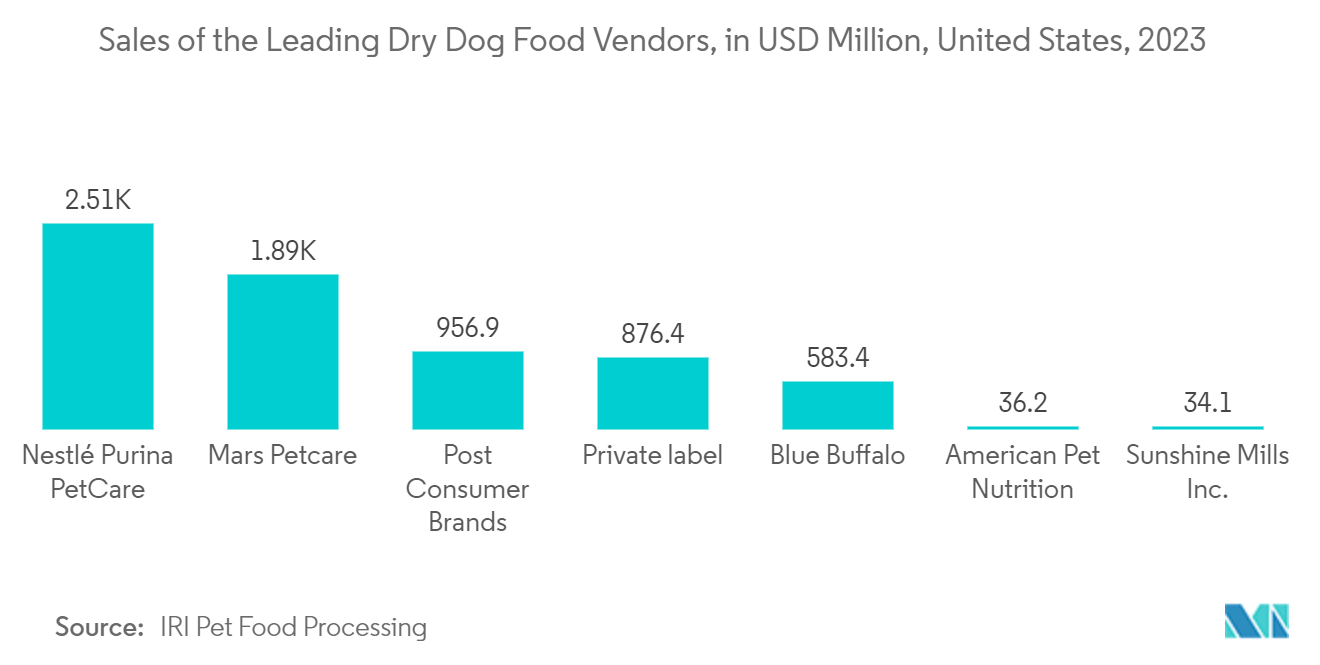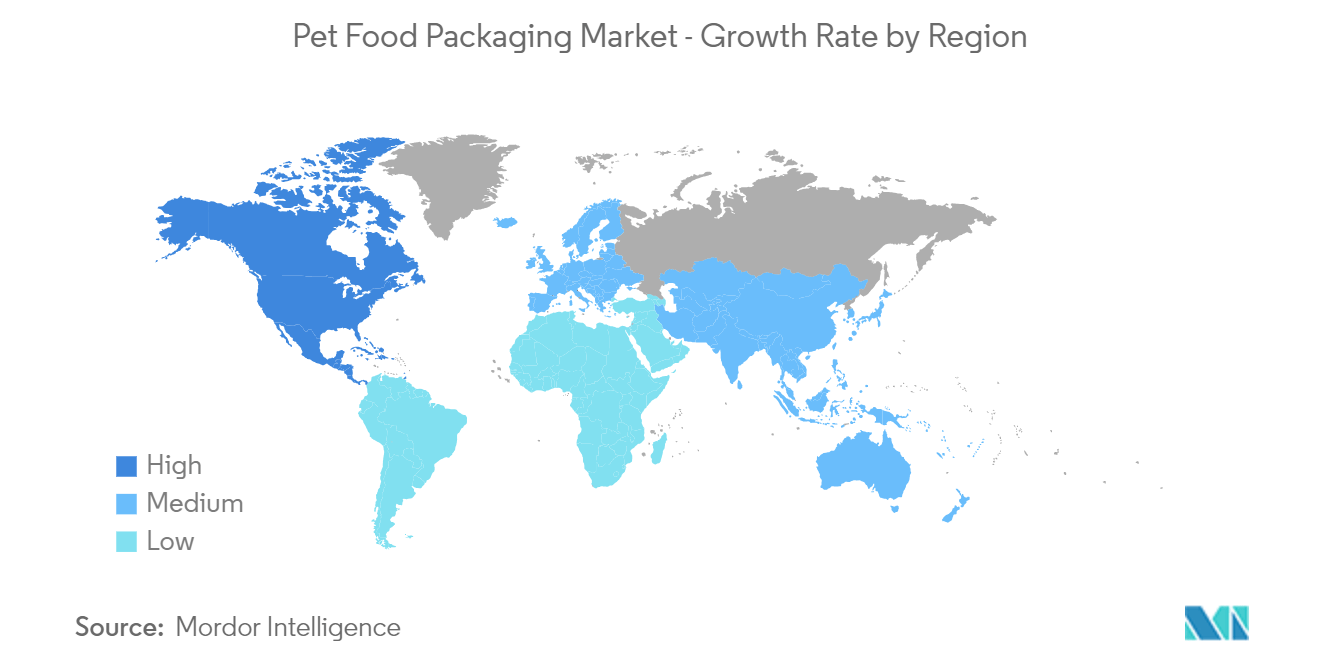Market Trends of Pet Food Packaging Industry
The Dry Food Segment is Expected to Hold a Considerable Share in the Market
- Dry pet food is convenient for pet owners and retailers due to its longer shelf life and ease of storage. This stability and minimal need for refrigeration boost its popularity. According to an official source, the market value of dry dog food in India was approximately USD 482 million in 2023. This was forecast to increase further and reach approximately USD 963 million by the end of 2028. Factors such as storage, bulk purchase, and shelf life were the primary reasons for dry dog food to have a share of over 88% of all dog food in India. Such factors are expected to propel the market's growth.
- Dry pet foods have a long shelf life due to low water activity and consequent microbiological stability. However, they are typically less appealing to pets than moist or semi-moist pet foods, probably due to their low flavor appeal. In contrast, some pets may prefer dry pet foods due to their textural qualities. This drives the growth of the dry pet food packaging market.
- In addition, the rising number of pet owners globally contributes to increased demand for all types of pet food, including dry pet food, which is often preferred for its practicality and cost-effectiveness. As per official data, India had a pet dog population exceeding 33 million in 2023. Projections indicate this figure will surpass 51 million by 2028. The number of pet dogs has led to increased pet food sales nationwide.
- Packaging for dry pet food has usually been simple, with major brands using paper bags. Companies like Nestlé Purina are trying new packaging ideas. They are testing new paper materials and a system where customers bring their containers for refills. Data from IRI for the week ending June 18, 2023, showed Nestlé Purina PetCare as the top-selling dry dog food brand in the United States, earning about USD 2.5 billion.
- According to the UK Pet Food, the market value for dog food in the UK was GBP 1840 million (about USD 2303 million) in 2023. As pet food sales grow, so does the need for packaging materials. This increase means pet food packaging manufacturers can expect more orders for materials like plastic, paper, and metal, which are used to make various packaging solutions.
- Furthermore, dry pet food has a lower production cost than wet food, making it a more economically viable option for manufacturers and consumers, contributing to its widespread use. Also, advances in packaging technology, such as resealable pouches and eco-friendly materials, enhance dry pet food's appeal. These innovations improve convenience and sustainability, driving the market's growth.

North America is Expected to Witness a Significant Growth in the Market
- North America significantly contributes to the growth of the pet food packaging market. Countries like the United States and Canada have some of the highest pet ownership rates globally. This large pet owner base drives substantial demand for various pet food products and their packaging. According to Agriculture and Agri-Food Canada, Canada's pet population, encompassing dogs, cats, fish, small mammals, and reptiles, stood at around 27.93 million a few years ago. Projections indicate this number is expected to surpass 28.5 million by 2025.
- In North America, the rising demand for pet food packaging aligns closely with the growing trend of pet adoption, particularly for rescue dogs. As pet ownership expands in the region, especially with a focus on rescue dogs, the need for pet food naturally escalates. This uptick in pet ownership boosts the demand for pet food and amplifies the need for its packaging, presenting lucrative opportunities for packaging manufacturers.
- Furthermore, pet humanization is a pivotal trend reshaping the pet care landscape. A survey by Mondi revealed that 75% of participants are inclined to spend more on brands that prioritize sustainable packaging. As a result, brands in the pet food sector are aligning their solutions with these corporate values, placing sustainability at the forefront. Moreover, companies like Mondi lead the range with offerings like BarrierPack Recyclable. These solutions, which include premade pouches and FFS roll-stock, utilize plastic laminates. These laminates are recyclable in regions that accept flexible packaging and can be returned through store drop-off while maintaining their intended functionality.
- BASF America is pioneering sustainable pet food packaging using its water-based emulsion, JONCRYL HPB 1702. This innovative solution meets the pet food market's demands for grease resistance and food safety certifications.
- Moreover, in 2023, the US pet industry spending reached an impressive USD 147 billion, marking a substantial increase from the USD 90.5 billion recorded in prior years, as the American Pet Products Association Inc. reported. As pet expenditures rise, so does the demand for pet food, leading to an increased need for packaging to support this heightened production and consumption.
- North America is a hub for packaging innovation, with organizations investing in unique materials and technologies to improve packaging efficiency, functionality, and aesthetics. These factors are expected to drive the North American pet food packaging market, making it a critical region.


